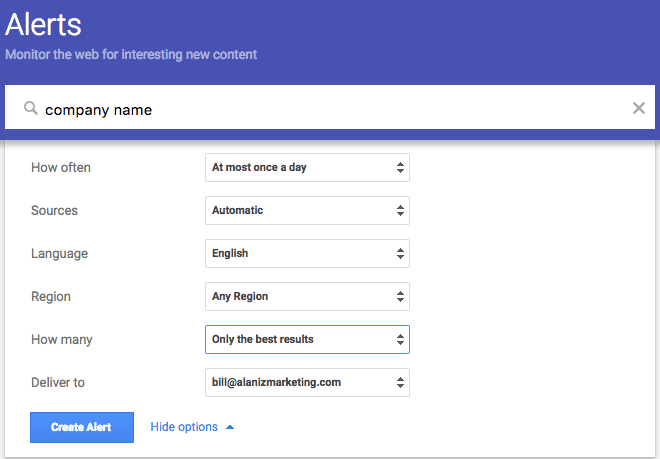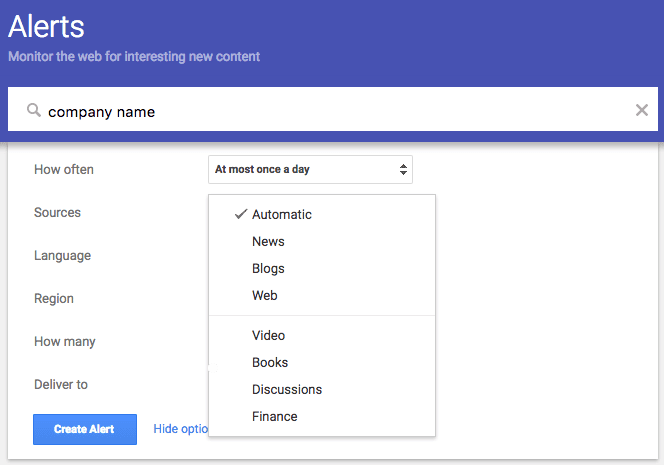This blog post is part of “The Ultimate Guide to Public Relations” blog series.
Every company wants to know when it is being written about, blogged about, tweeted about and any other form of media coverage. Tracking the hundreds of thousands of media outlets unleashed by the web and social media is nearly impossible to do without sophisticated, expensive media monitoring platforms. For companies that can’t or don’t want to invest several thousand dollars in media monitoring software, Google alerts is a free, if limited, alternative.

How to Use Google Alerts
Google Alerts is pretty simple. You enter a keyword–for example your company name–and set some criteria for how and when Google will notify you when this keyword is mentioned online.

Selecting News Sources
You can select the sources that you want Google to track. The default is “Automatic,” (this was previously “Everything,” which seems clearer but it means the same thing), which searches all of the categories listed. You can select as many categories as you like.

You can then select the language and region you want to include. You can only select one of each of these. For multiple languages, for example, you can create multiple alerts. The last option, “How many,” has to do with the volume of alerts you want to receive. Selecting “Only the best” will result in getting what Google considers the information most relevant to your keyword. If you select “All results,” you will receive every mention of the keyword Google finds.
Focusing Searches
You can use quotes to search for two or more words only when they are used together–for example, “white house.” If your keyword is similar to common words used for unrelated purposes, you can use negative keywords. For example, if your company name is “Apple,” you might want to exclude any references to fruit, so you would enter “Apple -fruit.” You can also use a tilde (~) to get results for similar terms to the one you have entered.
Another use for Google Alerts is to track mentions of competitors, specific products, partners or any other term that is important to your business. In order to do this, you will need to create multiple alerts.
Limitations
There are limitations of what Google Alerts can monitor–the information has to appear on Google in some form. This means that you can’t use Google Alerts to monitor social networks, TV and radio coverage (unless the channel has a website where it posts video or audio coverage), or anything else that isn’t indexed on Google. Still, since most news is indexed online in some format, you will be able to track much of it using this free tool.
This blog post is part of “The Ultimate Guide to Public Relations” blog series.




